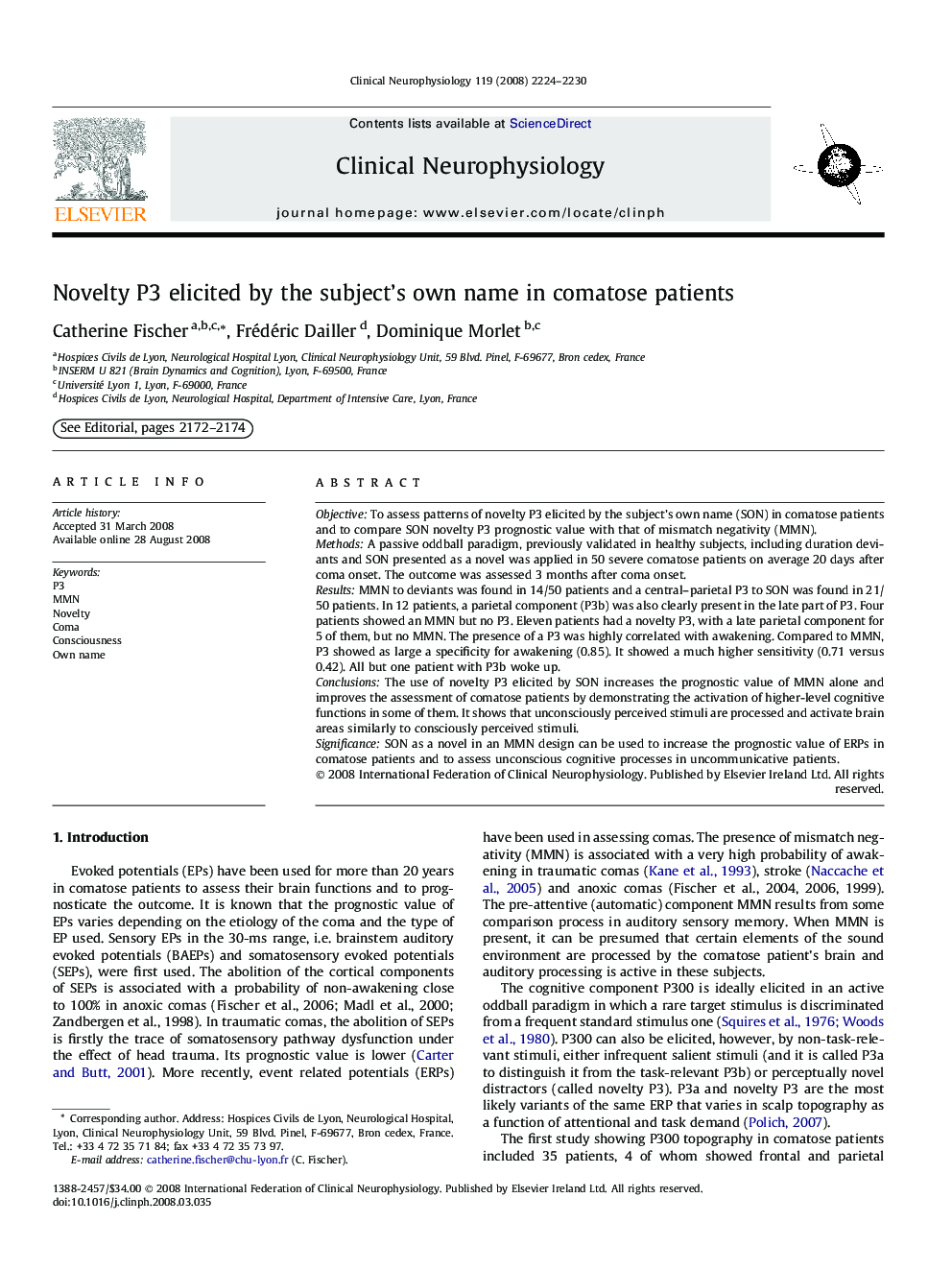| Article ID | Journal | Published Year | Pages | File Type |
|---|---|---|---|---|
| 3046455 | Clinical Neurophysiology | 2008 | 7 Pages |
ObjectiveTo assess patterns of novelty P3 elicited by the subject’s own name (SON) in comatose patients and to compare SON novelty P3 prognostic value with that of mismatch negativity (MMN).MethodsA passive oddball paradigm, previously validated in healthy subjects, including duration deviants and SON presented as a novel was applied in 50 severe comatose patients on average 20 days after coma onset. The outcome was assessed 3 months after coma onset.ResultsMMN to deviants was found in 14/50 patients and a central–parietal P3 to SON was found in 21/50 patients. In 12 patients, a parietal component (P3b) was also clearly present in the late part of P3. Four patients showed an MMN but no P3. Eleven patients had a novelty P3, with a late parietal component for 5 of them, but no MMN. The presence of a P3 was highly correlated with awakening. Compared to MMN, P3 showed as large a specificity for awakening (0.85). It showed a much higher sensitivity (0.71 versus 0.42). All but one patient with P3b woke up.ConclusionsThe use of novelty P3 elicited by SON increases the prognostic value of MMN alone and improves the assessment of comatose patients by demonstrating the activation of higher-level cognitive functions in some of them. It shows that unconsciously perceived stimuli are processed and activate brain areas similarly to consciously perceived stimuli.SignificanceSON as a novel in an MMN design can be used to increase the prognostic value of ERPs in comatose patients and to assess unconscious cognitive processes in uncommunicative patients.
